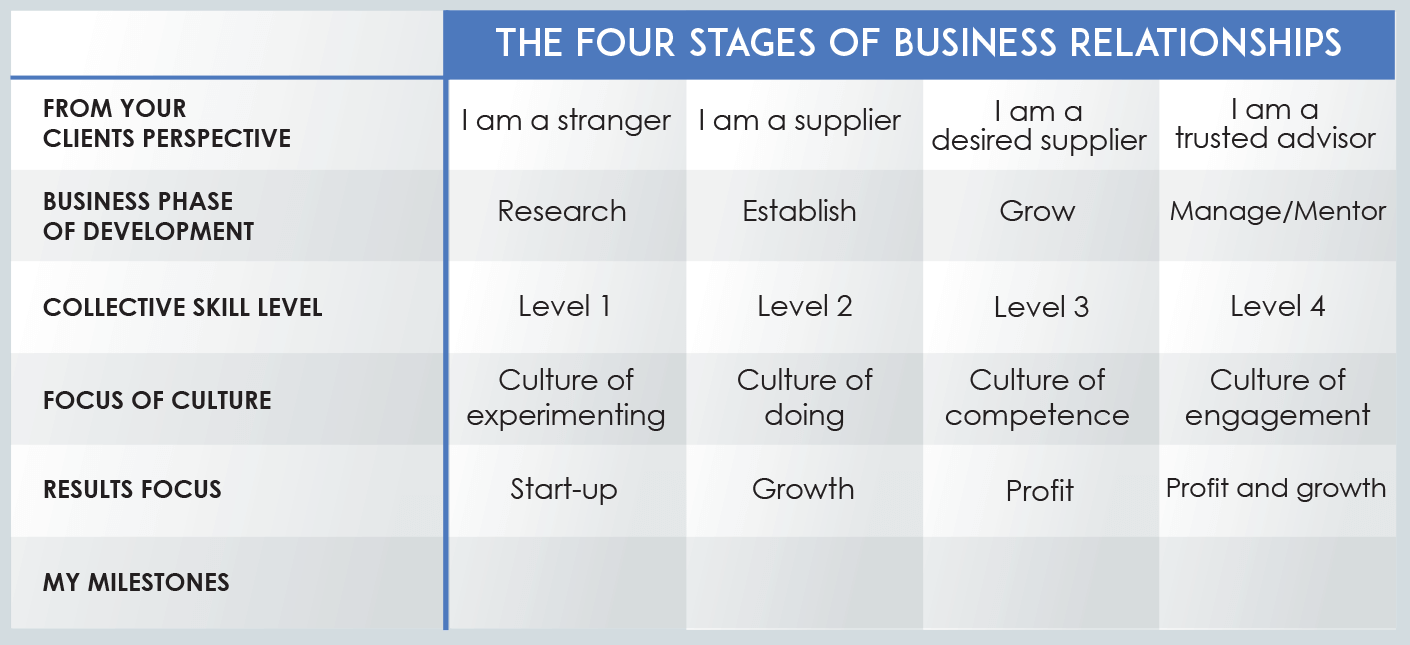March 8, 2022
Building strategic relationships — Part 2
 In the February issue of Landscape Ontario magazine, I shared the first two steps I use to build strategic business relationships. Let’s continue with the final two steps.
In the February issue of Landscape Ontario magazine, I shared the first two steps I use to build strategic business relationships. Let’s continue with the final two steps.
Step 3
The opportunities to build better relationships in your business run both broad and deep. How often do you make time to assess if your team is maintaining business relationships in the way you’d like them to? Are staff consistently aligned with the company brand speaking on your behalf?When I used to own a landscape company, I had a combination of horrific realizations that staff were unintentionally misaligned with my business brand when interacting with others. So I set out to create a strategy to consistently and proactively manage those relationships.
I had assumed that staff would use common sense when dealing with others. I was wrong. Common sense is actually just information plus experience. I realized staff had neither the same information (context) nor the same experience that I had or used when engaging with clients.
I created a list of opportunities our team had to make an impression, and put guidelines and processes in place for each. I then listed 50 touchpoints, which could occur on any given day between my team, clients and prospective clients. These covered many areas: website, social media, phone/voicemail protocols, cell phones, office visitors, signage, staff conduct off-site, print media, emails/contracts/correspondence, interviewing, hiring, and more. The touchpoint list and the resulting strategies helped guide my team to act and think in a way that was aligned with my company brand.
Take a moment to consider how many ways your staff interacts with your clients, the community and beyond and create a strategy to guide them.
Step 4
This model is an excellent way to benchmark and identify the nature of relationships in your business, and in each division of your business. First, assess your current client list and consider whether they view you as a: stranger, supplier, desired supplier or trusted advisor. What would it take to convert each into the next category? (see chart) When you consider this for each division of your company, some of your services may be at level 3, but others may be at level 1 or 2. Some may NEVER reach level 4.
When you consider this for each division of your company, some of your services may be at level 3, but others may be at level 1 or 2. Some may NEVER reach level 4.Level 4 isn’t better; it’s different. It’s deeper. Some companies never go this deep on building relationships. For example, price focused businesses — their strategy isn’t to be a desired supplier or a trusted advisor — it’s a volume play, not a loyalty play.
If you’re looking to build your business on loyalty, then there’s value in recognizing which offerings and clients you currently have at each level, and how to nudge them into the deeper levels. Whatever stage you think you’re at now, it’s likely actually one stage lower. A very common mistake is to over-evaluate.
When we over rate ourselves, we don’t reach and stretch our ability, and we don’t challenge our status quo. Developing the focus of culture is key, and it’s important to perfect that focus before thinking of moving to the next level.
Level one start-ups have a culture of experimentation. Level two businesses are building momentum by ‘doing’ the work. At level three, established ‘trusted supplier’ companies start to perfect pricing, production rates, systems, consistency and attention to detail. By this stage, you know what you do well and what you avoid taking on — playing only to the strengths and competency of the team. Once a company reaches level 4 across all divisions, there is a culture of engagement (core values, common vision, focus, alignment, retention, and career growth). This is a tough stage to reach in today’s workforce climate, and happens in companies where a focus on culture, consistency and excellence prevails.
I hope you’ll consider using the frameworks I’ve provided to challenge yourself to think more strategically about the relationships in your business.